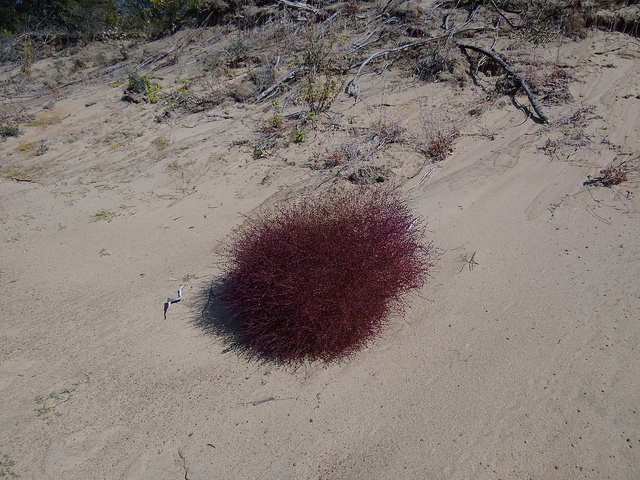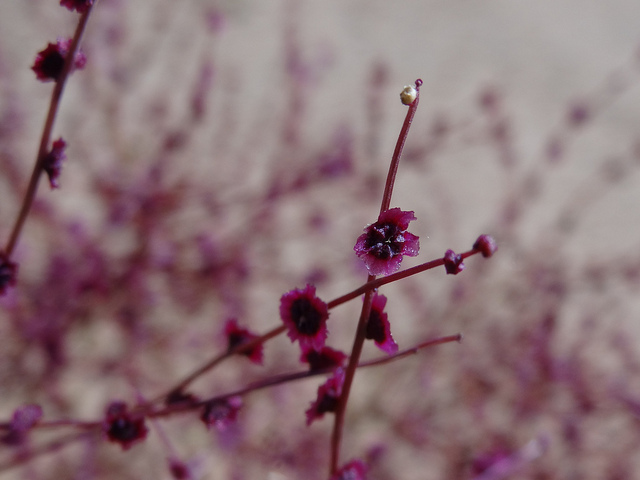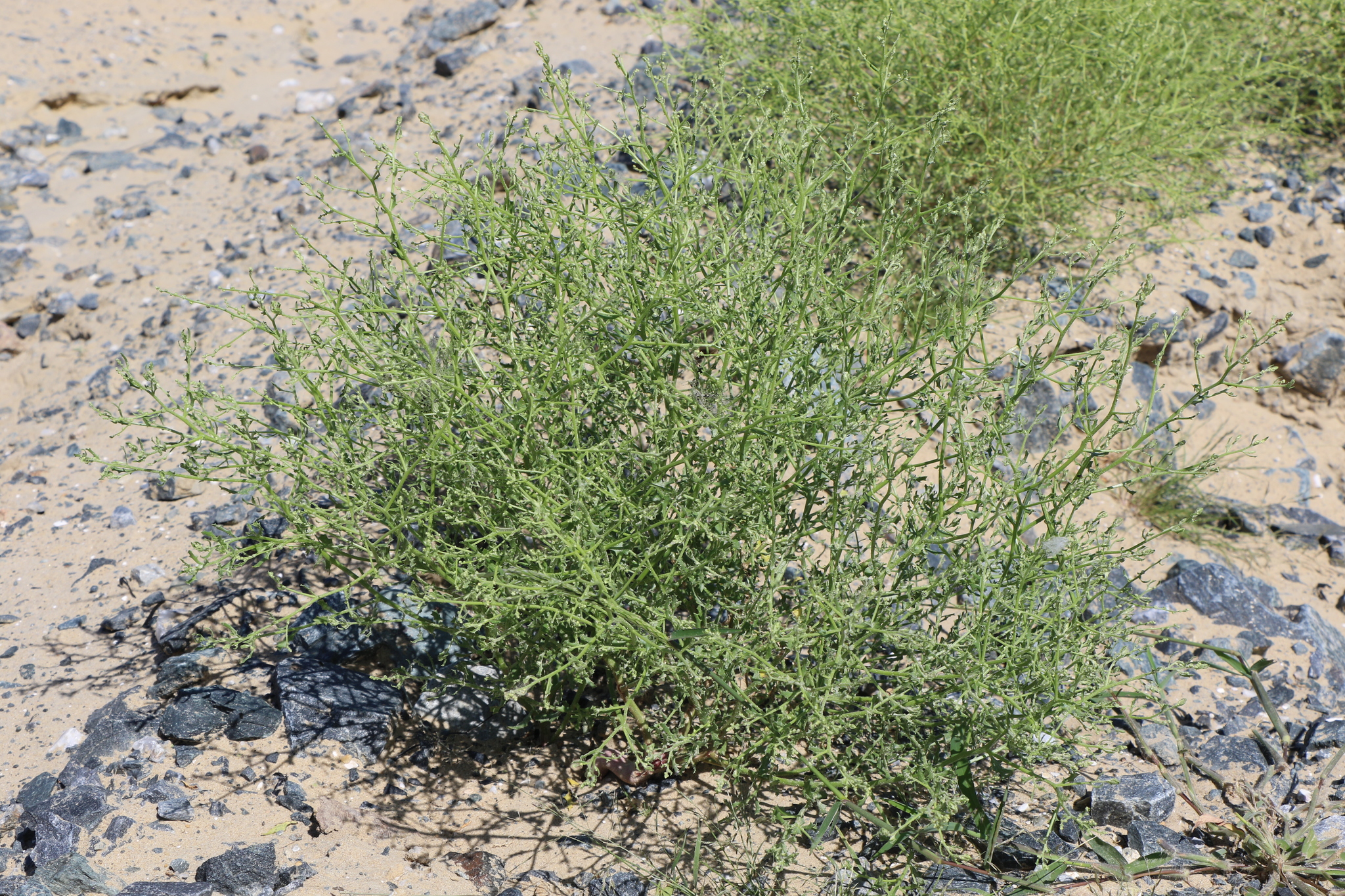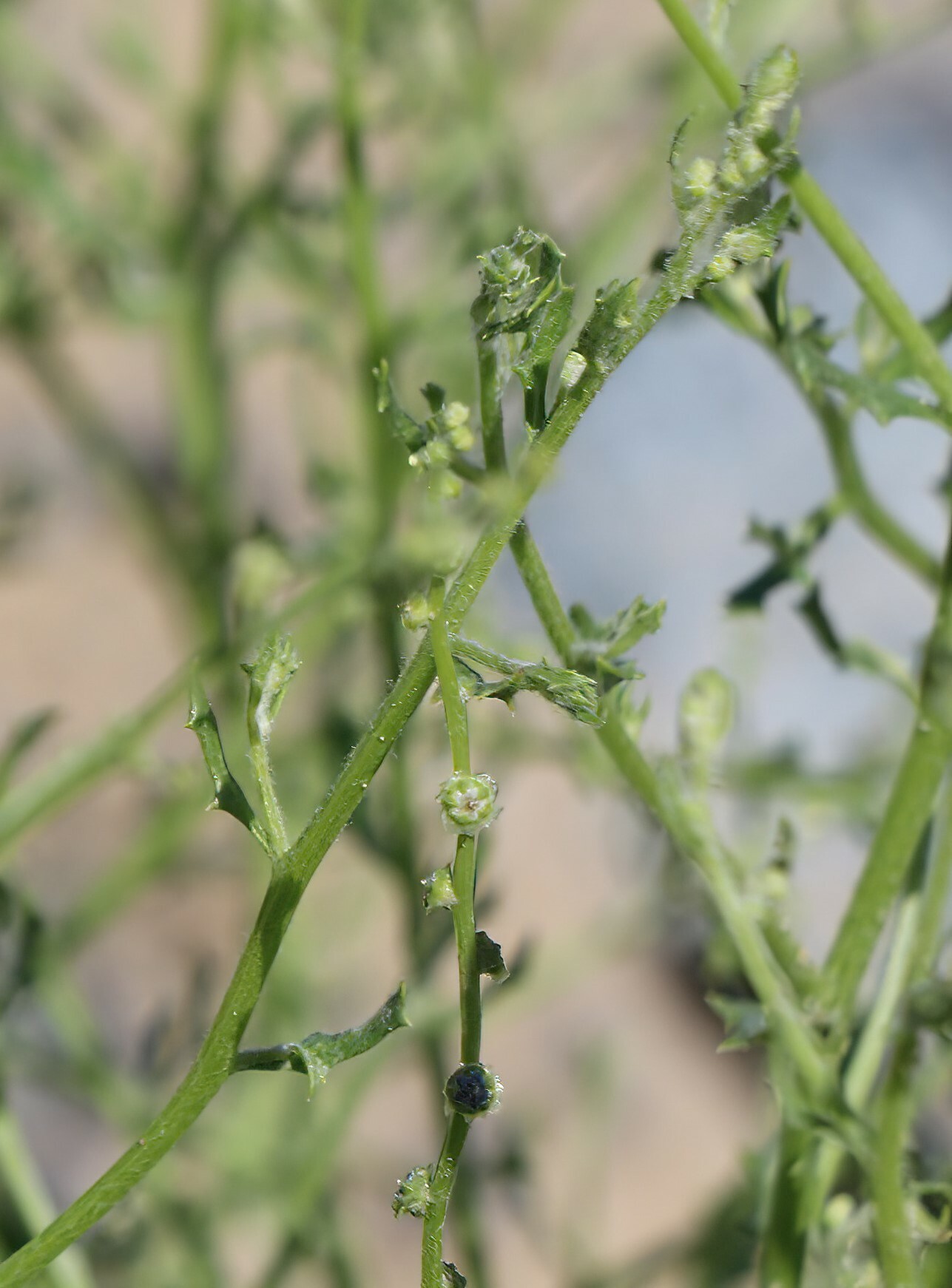Map Snapshot





13 Records
Seasonality Snapshot
Source: Wikipedia
| Dysphania atriplicifolia | |
|---|---|

| |
| Scientific classification | |
| Kingdom: | Plantae |
| Clade: | Tracheophytes |
| Clade: | Angiosperms |
| Clade: | Eudicots |
| Order: | Caryophyllales |
| Family: | Amaranthaceae |
| Subfamily: | Chenopodioideae |
| Tribe: | Dysphanieae |
| Genus: | Dysphania |
| Species: | D. atriplicifolia
|
| Binomial name | |
| Dysphania atriplicifolia (Spreng.) G.Kadereit, Sukhor. & Uotila (2021)
| |
| Synonyms[1] | |
| |
Dysphania atriplicifolia (synonym Cycloloma atriplicifolium) is species of flowering plant known by the common names winged pigweed, tumble ringwing, plains tumbleweed,[2] and tumble-weed.[3] This plant is native to central North America, but it is spreading and has been occasionally reported in far-flung areas from California to Maine to the Canadian prairie. It is considered an introduced species outside of central North America. This is a bushy annual herb forming a rounded pale green clump which may exceed 0.5 m (1 ft 8 in) in height. It is very intricately branched, with toothed leaves occurring near the base. The spreading stems bear widely spaced flowers are small immature fruits fringed with a nearly transparent membranous wing. In autumn, the plant forms a tumbleweed.[4] The fruit is a utricle about 2 millimeters long containing a single seed.
Uses
[edit]The seeds are eaten as a food staple by Native American peoples including the Zuni and Hopi. The Zuni people mix the seeds with ground corn to make a mush.[5] The Zuni also grind the seeds, mix them with corn meal and make them into steamed cakes.[6] The Zuni also chew the blossoms and rub them all over the hands for protection.[7]
References
[edit]- ^ Dysphania atriplicifolia (Spreng.) G.Kadereit, Sukhor. & Uotila. Plants of the World Online. Retrieved 8 April 2024.
- ^ "Chenopodiaceae". botany.csdl.tamu.edu. Archived from the original on 16 July 2011. Retrieved 8 January 2009.
- ^ Nathaniel Lord Britton, Addison Brown (1913). An Illustrated Flora of the Northern United States, Canada and the British Possessions: From Newfoundland to the Parallel of the Southern Boundary of Virginia, and from the Atlantic Ocean Westward to the 102d Meridian. Vol. 2. C. Scribner's sons. page 16
- ^ Louis Hermann Pammel (1903). Some Weeds of Iowa. Experiment Station, Iowa State College of Agriculture and the Mechanic Arts. page 455
- ^ Castetter, Edward Franklin (1935), "Uncultivated native plants used as sources of food", University of New Mexico Biological Series (University of New Mexico Bulletin, Whole No. 266, Ethnobiological Studies in the American Southwest), 4 (1): 22
- ^ Stevenson, Matilda Coxe (1915). "Ethnobotany of the Zuni Indians". SI-BAE Annual Report #30. Bureau of American Ethnology. p. 67.
- ^ Stevenson 1915, p. 84
External links
[edit]- Jepson Manual Treatment
- USDA Plants Profile
- Photo gallery
- Cycloloma atriplicifolium - Online, In: Flora of North America Editorial Committee (Hrsg.): Flora of North America North of Mexico, Volume 4: Magnoliophyta: Caryophyllidae, part 1., Oxford University Press, New York, ISBN 0-19-517389-9, p. 265.
- Cycloloma atriplicifolium at Tropicos



